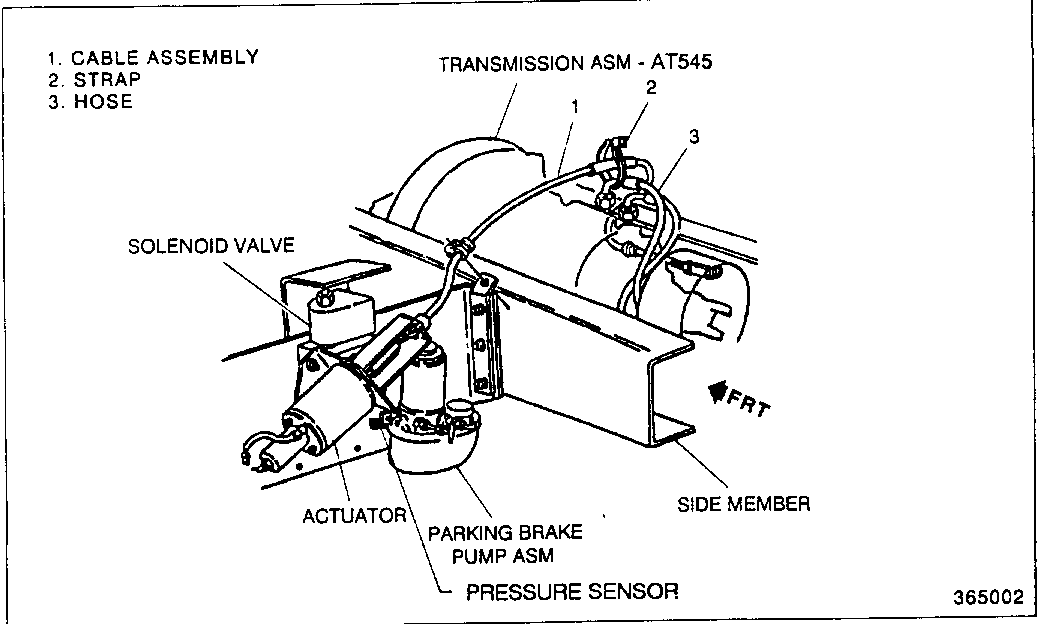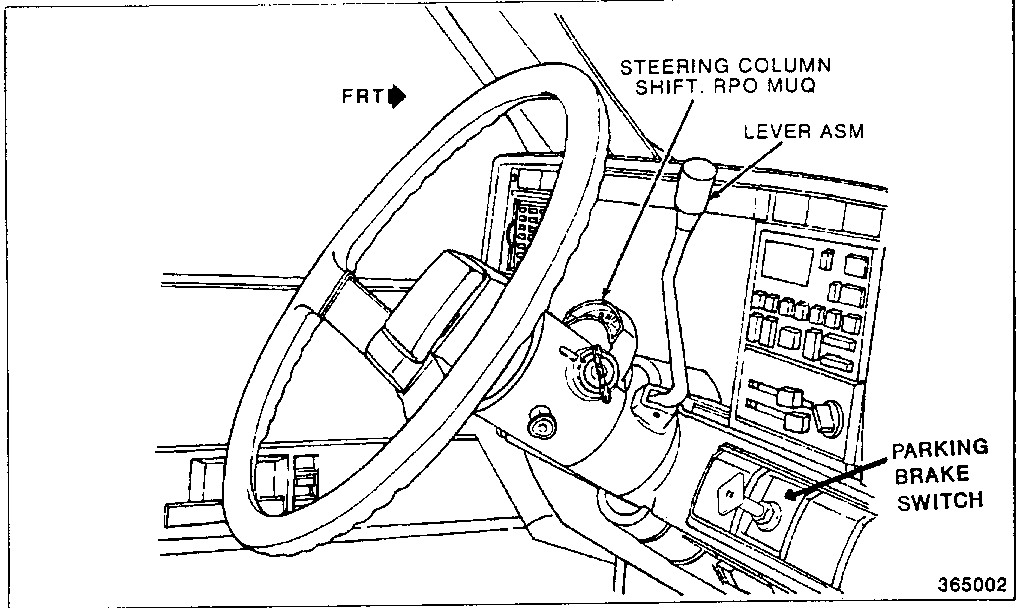SERVICE MANUAL UPDATE-ELECT./ HYDRAULIC PARKING BRAKE SYSTEM

SUBJECT: ELECTRIC/HYDRAULIC PARKING BRAKE SYSTEM (SYSTEM FEATURES)
VEHICLES AFFECTED: 1993 C5H, C6H, AND C7H WITH RPO J71
GMC Truck has introduced an Electric/Hydraulic Parking Brake, RPOJ71, in response to customer requests. Attached to this bulletin, which provides an overview of the system, is the Medium Duty Service Manual Supplement (X-9363) for future reference.
SYSTEM DESCRIPTION:
The transmission-mounted parking brake is applied through a cable routed to a remote-mounted spring chamber, or actuator. The actuator applies the brake with the spring and is released by hydraulic pressure (i.e. Spring Apply, Hydraulic Pressure Release). The hydraulic pressure is provided by a dedicated pump unit which consists of a pump, electric motor, and reservoir (Figure 1). The control system consists of a push/pull switch on the instrument panel, electric relay, pressure sensor, park brake control module (PBCM), and solenoid valve. The pump unit, actuator assembly, and solenoid valve are located in the component box under the drivers door. The driver information system consists of a low pressure switch, three telltale lights, and an audible alarm. On vehicles equipped with the Allison AT545 Automatic Transmission, the shifter may be steering column mounted (RPO MUQ) with "park" position, and a key interlock (Figure 2). The interlock allows the key to be removed only when the shifter is in the "park" position.
Vehicles equipped with dash mounted or floor mounted shift levers for the AT545 have no "park" position. To park these vehicles, the shift lever must be put in the "neutral" position and the dash mounted parking brake switch (Figure 2) must be pulled to apply the park brake. When put in neutral, an audible and visual alarm will switch on until the park brake is applied.
FUNCTIONAL MODES:
System Apply
To apply the parking brake, the control knob (shown in Figure 2) is pulled out. The controls location on the instrument panel, knob, and operation are the same as on air brake vehicles. On an AT545 Automatic Transmission with RPO MUQ, the brake is also applied whenever the shifter is in "park" position. This opens the electrical circuit, which, in turn, causes the solenoid valve to move to its normally open position, which allows the hydraulic fluid to return to the reservoir, releasing the pressure in actuator that compresses the spring. The spring's force pulls the cable to apply the brake. When the pressure drops below the set switch's closing pressure, the "park brake" indicator light comes on with the key in the "run" position.
System Release
To release the parking brake, push the control knob in, or with an AT545 Automatic Transmission with RPO MUQ, shift out of the "park" position (the control knob must also be pushed in if it was pulled out). This closes the electrical circuit which closes the solenoid valve and activates the pump motor. The pump is shut off by the park brake control module when the upper pressure limit is reached. The pressure is held by a check valve in the pump unit. If the pressure falls below the pressure control switch's lower limit, the pump is reactivated until the upper limit is reached again.
System Fail Safe
The system applies the parking brake in the case of either a loss of electrical power or a loss of hydraulic pressure. This is similar to air brake systems.
Driver Information System
The driver information system contains three telltale lights on the instrument panel and an alarm.
1. The existing park brake light comes on when the brake is applied as required by FMVSS 105. (Key On)
2. The "apply park brake" light and an audible alarm comes on if the key is turned off and the parking brake is not applied.
3. The service light comes on whenever the motor is on. This indicates a need for service or adjustment if it stays on for more than a few seconds.


General Motors bulletins are intended for use by professional technicians, not a "do-it-yourselfer". They are written to inform those technicians of conditions that may occur on some vehicles, or to provide information that could assist in the proper service of a vehicle. Properly trained technicians have the equipment, tools, safety instructions and know-how to do a job properly and safely. If a condition is described, do not assume that the bulletin applies to your vehicle, or that your vehicle will have that condition. See a General Motors dealer servicing your brand of General Motors vehicle for information on whether your vehicle may benefit from the information.
